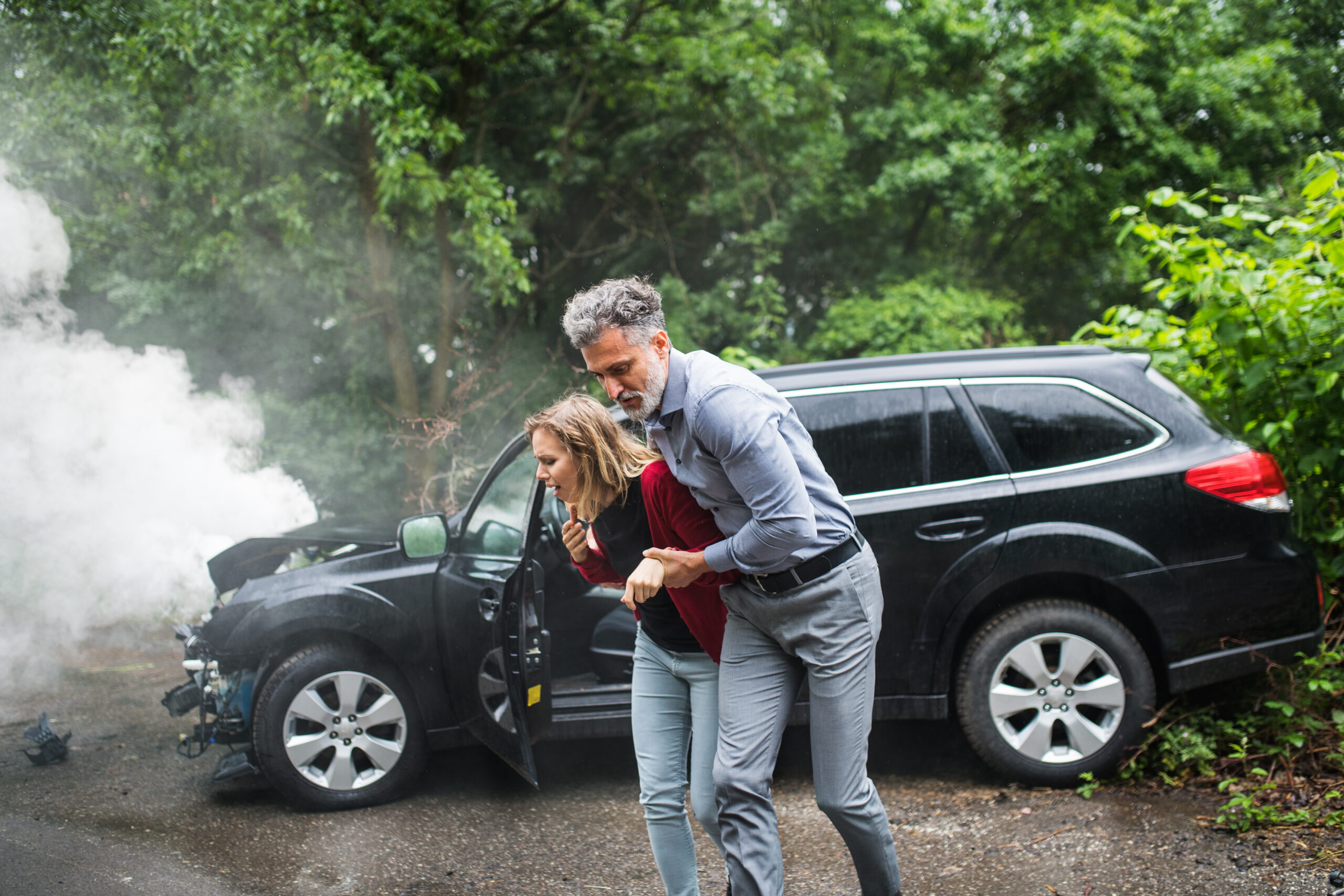Car accidents are frightening for everyone, and being a passenger can add an extra layer of confusion. You were just chatting or looking at your phone a second ago, and now—what do you do? If you are able to move, how do you help? Do you have to give someone a statement? How are you going to pay medical bills? What are the laws about all this?
As a passenger, you have rights and responsibilities in a car accident. Some of those rights will depend on what kind of ride you were taking and the insurance coverage that applies. But some apply to any car accident in the state of California.
At the Scene of the Accident
The first order of business is to make sure you are safe and everyone in the car is safe. If there is any apparent injury, it’s best not to move yourself or anyone else unless it is necessary. Even if you don’t feel hurt, you need to get a medical exam as soon as possible. Car accident injuries can “hide,” and some injuries like this—internal bleeding, head trauma—can be serious or even fatal. Whatever it finds, an immediate medical exam will produce important documentation for your insurance claim.
Someone must call 911. A driver has reporting responsibilities in a California car accident. The law requires them to file a DMV report for any accident that caused injury or more than $1000 worth of property damage. If a driver physically cannot report the accident, the law requires another occupant in the car to make it. See California Vehicle Code § 20010.
The law, of course, requires a driver to provide their own name, address, and insurance information to the occupants of the other vehicle and the responding officers. However, it also requires them to provide the name and address of anyone injured in their own car to the police and to the occupants of the other vehicle. See Cal. Veh. Code § 20003.
As an injured occupant, you must show your driver’s license or other ID on request from an officer or an occupant of the other car. If you can, you will also want to collect this information from the other parties. Taking photos of the scene, if it is safe to do so, can be extremely helpful with your claim.
Do not make statements that are not strictly necessary—and avoid social media. Even unrelated photos or posts could be used against you later if an insurer wants to claim that you were not as injured as you really were. It is wisest to speak to a personal injury attorney before making any statement, especially to an insurance company.
Recovering Your Damages: Who Pays and How?
The type of claim you make depends on several factors: the fault of the drivers involved, the insurance coverage of the parties, and whether you were paying for your ride.
In theory, you should be covered by the insurance policy of the driver who is at fault. But drivers often share responsibility for accidents. What happens then? Under California law, fault is determined by a percentage—for example, one driver may be 60% at fault and another 40%—and that percentage determines the liability of the drivers. That would require claims on both your own driver’s insurance and the other driver’s. If more cars are involved in the accident, liability becomes yet more complicated.
What happens when the driver is uninsured or does not carry enough coverage to meet your needs? California insurance policies automatically contain uninsured/underinsured (UM/UIM) coverage, although a policyholder may waive the coverage to reduce costs. If you carry UM/UIM insurance on your own auto policy, it may cover you even as a passenger in another car.
If your driver has Med Pay coverage on their auto policy, it can provide quick, no-fault medical coverage to you as a passenger. And if you have your own auto insurance with Med Pay, you can even use it after an accident as a passenger in another car. However, Med Pay is optional, and its coverage limits are typically fairly low compared to serious medical expenses.
Accidents Involving Vehicles for Hire
It is crucial to speak to a personal injury attorney about the kind of coverage you may be entitled to as a paying passenger. Company statements can mislead you about your rights, either deliberately or by accident.
Taxis, shuttles, charters, and bus services are required to carry differing amounts of insurance, depending on the vehicle size and company type. For example, in Los Angeles County, taxis are required to carry at least $100,000 worth of coverage for bodily injury to one person or $300,000 worth for injury to more than one person in an accident.
Rideshares like Uber or Lyft are legally defined as transportation network companies (TNC). When you are riding with a TNC car, the company’s insurance policy is in effect, potentially providing up to $1,000,000 in coverage for bodily injury. However, if you are in a vehicle struck by a rideshare car, that car may not carry as much coverage. Whether the company insurance applies depends on whether the driver was working at the time.
Where to Start
At V&A Law Firm, we want to help you get what you need to recover from your car accident. Our car accident attorneys will handle the complex negotiations and defend your rights. Contact us today at 818-369-3270 to schedule a free case review in our Encino offices.





